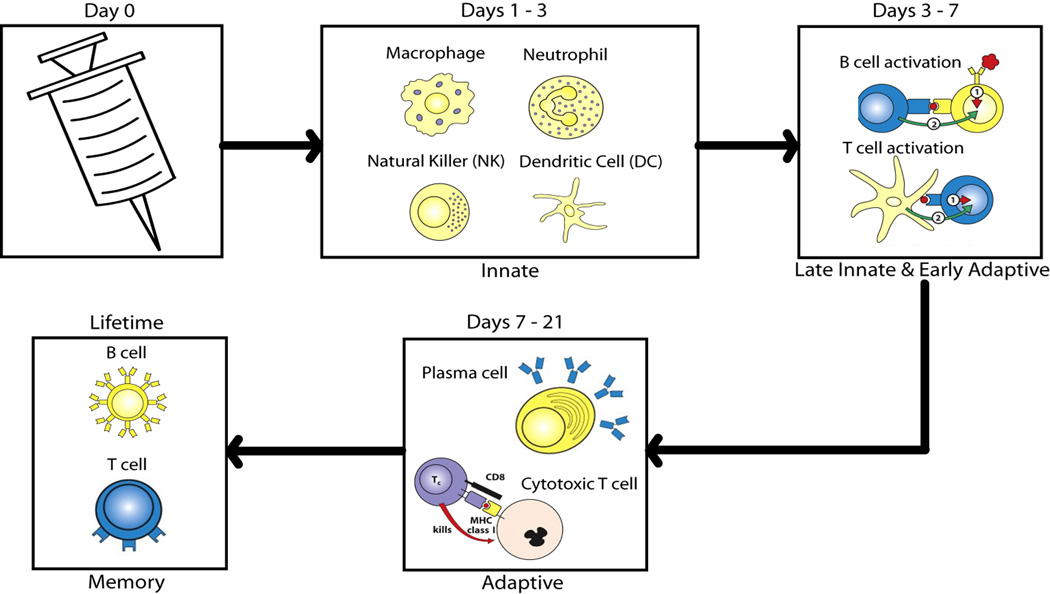Figure 1.
Overview of the immune response after a vaccine is given. Vaccines mimic the natural infection. The innate immune system, comprised of macrophages, dendritic cells, natural killer cells, and neutrophils work through pattern recognition receptors on their surfaces to recognize pathogen-associated molecular patterns. These cells recruit other cells to the area and work for approximately three days to clear the antigen through endocytosis. Between days 3 and 7, antigen presenting cells help activate B and T cells by presenting antigen specific peptides. The adaptive immune response is specific to the antigen being fought. B cells secrete antibodies against the antigen, and cytotoxic T cells kill infected cells. B and T cells can become memory cells, which continuously circulate throughout the blood until reinfection. Memory immunity is the ultimate goal of vaccines. Cell icons reproduced from Janeway’s Immunobiology by Murphy, Kenneth; et al with permission of Garland Science via Copyright Clearance Center.

